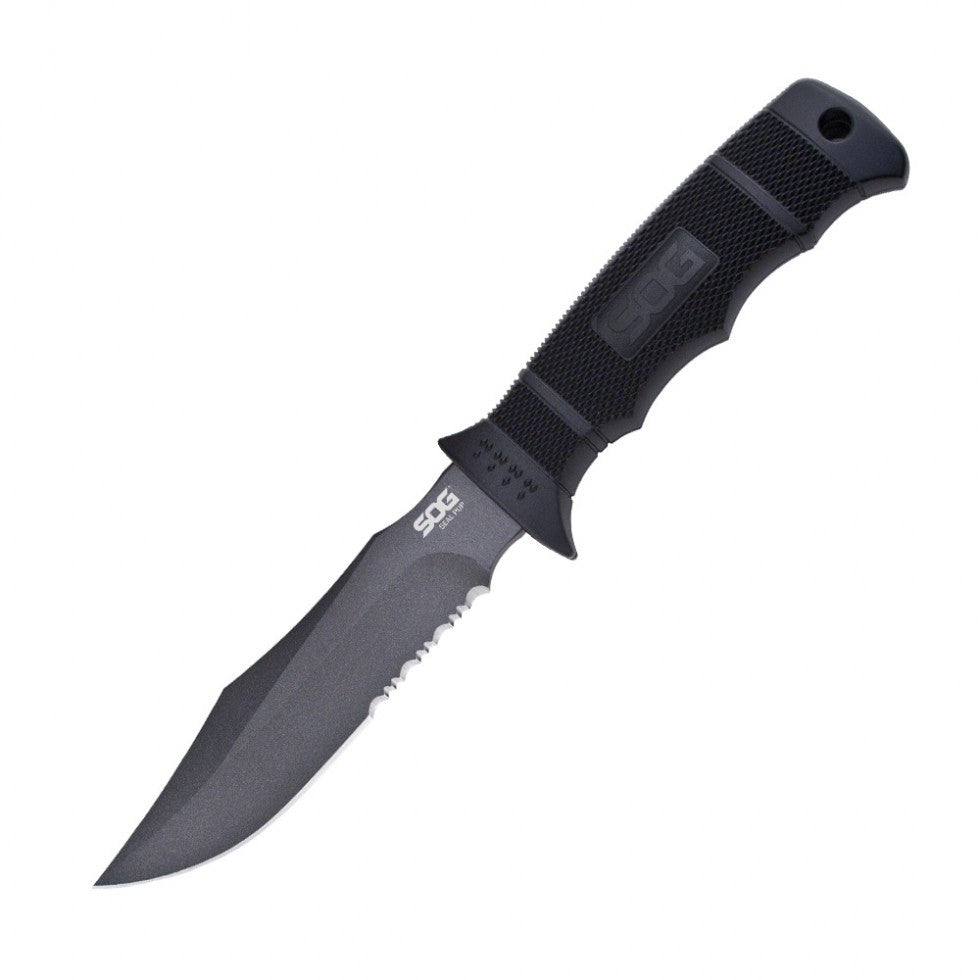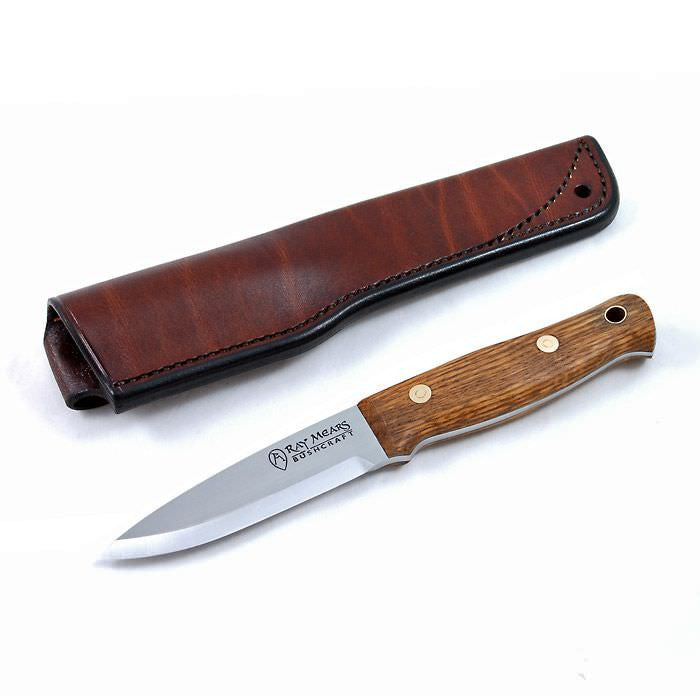
How To Choose The Perfect Bush Craft Knife
There is no such thing as the perfect bush craft knife.
Bush craft is an understanding of the natural environment and how to thrive within it. When you understand this, the nature of bush craft, you will gain a better understanding of the tools needed to accomplish various "crafty" tasks.
In the meantime, I will try and explain the various options considered to be suitable knives for bush craft and field tasks.
What does my knife need to be able to do?
A little imagination is needed here. Which tasks will I be trying to accomplish with this tool? Think about all the common tasks that you will be undertaking with your knife. Some common bush craft tasks include : carving and shaping wood, making fire sticks, splitting fire wood (batoning), cutting and manufacturing cordage, game and fish preparation, striking a fire steel or flint, shelter building, tinder preparation, scraping, skinning, cordage making, etc. What does your knife need to be able to do? Keep these tasks in mind when choosing your tool.
Traditional V Useful
Asking most people, you would immediately be pointed in the direction of Ray Mears and his famous "Woodlore" bush craft knife. The knife is based on a Scandinavian style grind meaning there is only one angle from the spine to the cutting edge. Undoubtedly, the Woodlore is a formidable bush tool, however the £400+ price tag and the massive waiting list means it is not an easily accessible knife and definitely not for the beginner. It would be a shame if after buying, you decided that crafting was not for you. Luckily, there are a myriad of other options which will perform equally well if not better. Ultimately, the style and aesthetic of the knife is probably the least important factor but probably the most personal. A classic bushcraft knife can be as good or bad as a knife with current styling.
Pictured below, Ray Mears Woodlore Bushcraft Knife

The Best Grind For Bush Craft
The grind, or shape of the cutting edge is an important determining factor of a knife's functionality.
The original European "bush craft" knife, is considered by many to be the Scandinavian Leku. As with the Woodlore, it features a Scandinavian grind and a full tang design (giving the knife more strength). The Scandinavian or "Scandi" grind has several advantages in the field, namely: it is easier to sharpen, it is fairly robust, it can be repaired in the field quite easily, and it is nice to use against wood as it gives you a lot of control when cutting. For these reasons, it is also good for beginners. However, this does not mean that this is the best style of blade for you.
Although my bush craft knife journey began with a traditionally ground "Scandi" knife, I soon started to notice the limitations of this type of grind. Namely, edge retention was not fantastic and it seemed a little prone to chipping (steel choice also comes into play but we will discuss this below).
I then moved on to a "compound bevel grind" which sounds a lot more complicated than it is. All this means is that instead of there being one angle to the grind, there are two or more. This makes for a tougher, longer lasting edge but again, it has its limitations. Although it is a tougher grind, it is a lot more difficult to sharpen in the field (and at home). Also, it is much more difficult to get it to as high a level of sharpness as a Scandi grind.
I then progressed to a convex ground knife, which shares some characteristics with a Scandi but instead of coming to a point at the end of the V, it comes to a point at the end of a U. Characteristically, a convex ground edge is very durable and can be sharpened to a high level but one downside of a convex grind, it that it is trickier to sharpen.
All in all, there are tens if not hundreds of different knife grinds. The distinction between the different types can be very slight. These small differences make subtle variations in the way the knife performs. The only way to really understand these nuances is to get some hands on experience with the various types of grind.
Here is a list of the more common types of knife grind:
Hollow grind, flat grind, v grind (a form of Scandinavian grind), high flat grind, chisel grind, convex grind, compound grind.
Pictured below, Fallkniven F1 Pilot's Survival Knife - a surprisingly good knife for bush craft tasks. The F1 features a convex grind.

Best steel choice for bush craft?
This is an extremely hotly debated subject in the bush craft and survival communities. There are two basic steel types which are relevant to these type of knives. Stainless steel or carbon steel.
So what's the difference?
Stainless steel is generally softer than carbon steel. This means stainless steel is generally easier to maintain and sharpen. Stainless steel also has a high chromium content meaning that it is more resistant to staining and rust (although not rust proof).
Carbon steel, as the name suggests, has a high carbon content. Traditionally this meant a slightly harder steel that provides slightly greater edge retention. As carbon steel is harder, it is also slightly more prone to chipping, although personally, I have never found this to be a huge problem as usually, chipping occurs when the knife is being misused
Obviously, as a general rule, carbon steel is more susceptible to rust. Again however, we can extract a general principle, that for water logged environments and activities such as fishing and hunting, we would recommend a stainless blade. So, where moisture or keeping knives maintained is an issue, we would also recommend a stainless steel blade. If you don't mind a little maintenance, will not be exposing your knife to moisture and need a knife that keeps its edge a little longer, we would recommend a carbon steel blade.
Another common and useful steel is known as laminated steel. This is where a layer of very hard carbon steel is sandwiched between two layers of a softer stainless steel. In some ways this is the best of both worlds as the cutting edge is very hard yet still resistant to rust as it is protected by the stainless steel over layers.
We need to bear in my mind that there have been many metallurgical advances in the last decade. With cold rolling, cryo freezing, powdered steels, laminated steels and advanced heat treating, sometimes, there is very little difference between the resulting steels. So now there are super tough stainless steels and highly rust resistant carbon steels. Personally, I lean towards rust resistant steel as I spend most of my time in woodlands and lakeside. Carrying stainless steel means I don't have to worry about leaving my knife on wet leaves or wood or if my pack gets saturated. This does not mean the knife is indestructible, so please bear in mind that even the most corrosion resistant steel will rust eventually, if left damp or wet for any extended period of time.
Full tang or not?
The tang is an extension of the main knife blade steel which extends throughout the handle. A full tang means it reaches to the back of the knife's handle. What does this mean in practice? It means a much stronger, more rigid knife that is unlikely to become dislodged from the handle. A true survival knife will feature a full tang but for bush craft, this is not absolutely necessary. Many popular crafting knives feature a rat tail tang, for example. This is where the tang tapers down to a small point, buried in the handle. For most bush craft tasks, even this type of tang will be sufficient.
Pictured below is a good example of a full tang blade. Notice how the blade steel extends to the back of the handle.
Overall size
There is a huge amount of range when it comes to bush craft knife size. I have seen bush craft knives ranging from a 4cm blade, all the way up to 30cm+. As a general rule, a smaller blade will give you more control, allowing more precise cuts, whereas a larger blade will give you greater cutting and chopping ability but less control. There is a saying in the knife community... "you can do a small task with a big knife but you can't to a big task with a small knife". There is perhaps some truth to this but personally, I believe that the majority of woodworking should be done with an axe and a saw and only the finishing touches (finer detail work) should be done with a knife. Therefore, my ideal blade size for bush craft is between 3 and 6 inches. Recently, there had been a trend for huge bush craft / survival knives that basically look like a machete (e.g. the Lofty Wiseman Survival Tool). Although these can be useful in some situations, I would argue that overall, a knife/axe/saw combination is a far more practical and useful set up. An all in one tool which combines axe, knife and saw functions can, without a doubt, save weight and space but if you lose or break it, that's it, you're down to nothing, so even from a survival perspective the classic combinations rule (in my humble opinion).
Pictured below, Bushcraft Parang by Condor.

Sheath Knife Vs Folding Knife
One must bear in mind, that there is difference between bush craft and survival and therefore, there is a difference between a bush craft and a survival knife. So, assuming that you follow the traditional bush craft knife/axe/saw combination, there is no reason to carry a huge over engineered, full tang knife. After all, if you're knife fails or gets lost, you still have 2 cutting tools remaining. Therefore, carrying a folding knife should generally be sufficient for the majority of crafting tasks. For safety, make sure it has a reliable and proven locking system. However, for deep wilderness, I would recommend a full tang sheath knife, just for the added security that such a knife affords. . Also, a sheath knife carried on a belt or lanyard, or on the outside of clothing, is much more readily accessible in an emergency, compared to a folding knife in a pocket or pouch.
Pictured below, the Outdoor Edge Mini Blaze - surprisingly good for smaller bush craft and field tasks.
Conclusion
Ultimately, the best bush craft knife is the one you have. Try out several before committing to one design and keep them cheap until you know a particular style suits your needs. Roughly speaking, you should consider the following elements : the steel type, the size, the grind, the type of tang, the handle material, the sheath and the overall look (aesthetic).
I have been surprised by several knives which were not directed at the bush craft scene but which were extremely good for crafting. Equally, I have used bush craft that were pretty useless for bush craft. This does not necessarily mean that the knives I was using were not fit for purpose, just perhaps, that they did not suit me and my usage style. That's why it is always important to test things out and discover what is best suited to your hand and mind.
I hope this rough guide is useful to anybody looking into buying a bush craft knife. Good luck and happy hunting.
Check out our article "Ten Great Knives for Bushcraft"!


